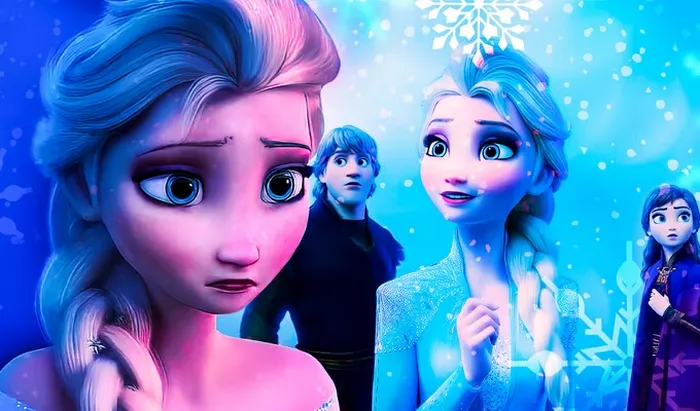The Frozen franchise has captivated audiences worldwide with its heartwarming tale of sisterly love, enchanting music, and visually stunning animation. Central to the films’ success is the beloved character of Elsa, the Snow Queen, who has become an iconic figure in modern animation. As Disney prepares for the highly anticipated release of Frozen 3, there is one crucial design tradition concerning Elsa that must be continued from the previous two movies. In this article, we will explore the significance of Elsa’s character design and how it has evolved over the years. We will also delve into the importance of maintaining this design tradition in the upcoming installment.
1. The Evolution of Elsa’s Character Design
In the first Frozen film, Elsa’s character design was revolutionary, showcasing her transformation from a reserved princess to a confident and empowered queen. Her signature ice-blue gown, along with her cascading platinum-blonde hair, became iconic symbols of the movie. The animators paid meticulous attention to the details, ensuring that her magical powers were beautifully portrayed in every scene. Elsa’s character design not only complemented her personality but also resonated deeply with the audience.
2. The Empowering Symbolism Behind Elsa’s Design
Elsa’s character design serves as an empowering symbol for viewers of all ages. Her transformation from a self-doubting individual to a self-assured leader mirrors the journey of personal growth and empowerment that many can relate to. Moreover, Elsa’s ice-blue gown is more than just a beautiful dress; it symbolizes her acceptance of her powers and her embracing of her true self, despite societal expectations. This message of self-acceptance and embracing one’s uniqueness has struck a chord with audiences, making Elsa a role model for many.
3. Consistency in Character Design
A significant aspect that must be maintained in Frozen 3 is consistency in Elsa’s character design. Over the course of two movies, the animators have crafted a distinct and recognizable appearance for Elsa. To deviate from this design would not only displease loyal fans but also disrupt the character’s narrative continuity. Ensuring that Elsa’s appearance remains consistent helps to maintain the emotional connection that the audience has formed with her over the years.
4. Exploring New Aspects of Elsa’s Design
While consistency is vital, there is still room for innovation in Elsa’s character design. In Frozen 3, the animators should explore new aspects of Elsa’s appearance that complement her character development. As the Snow Queen, Elsa’s powers are a reflection of her emotions, and this could be visually depicted through subtle changes in her design. For instance, her hair or costume might exhibit variations in response to her emotional state, adding depth to her character and enhancing the storytelling experience.
5. Cultural Representation and Sensitivity
Another crucial aspect that Disney must consider is cultural representation and sensitivity in Elsa’s design. The Frozen franchise has a global fanbase, and it is essential to be mindful of diverse cultural backgrounds. Elsa’s character design should be inclusive and respectful, avoiding stereotypes or cultural appropriation. The animators can draw inspiration from various cultures and art styles to create a design that is both stunning and culturally sensitive.
6. The Impact of Merchandising and Branding
Elsa’s character design has become synonymous with the Frozen brand, making her one of the most marketable and sought-after characters in the Disney merchandise lineup. From dolls and clothing to accessories and theme park attractions, Elsa’s design plays a significant role in driving the franchise’s commercial success. A consistent and appealing character design in Frozen 3 will undoubtedly have a positive impact on the franchise’s merchandising and branding efforts.
Conclusion
As Disney embarks on the journey of creating Frozen 3, it is paramount that they continue the important Elsa design tradition from the previous two movies. Elsa’s character design is not merely about her appearance but also about the messages of empowerment, self-acceptance, and growth that she embodies. Consistency in her design is crucial to maintaining the emotional connection that audiences have formed with the Snow Queen. At the same time, the animators should explore innovative ways to enhance her appearance, reflecting her character development. By being culturally sensitive and inclusive, Disney can ensure that Elsa’s character design continues to resonate with fans worldwide. As we eagerly await the next installment, one thing is certain – Elsa’s design will continue to be a symbol of strength and inspiration for generations to come.
RELEATED READING:
-
Unveiling 5 New Dune 2 Characters from the Books: Explained
-
The Meg 2’s Dinosaur Fight Is Awesome, But Completely Wrong

